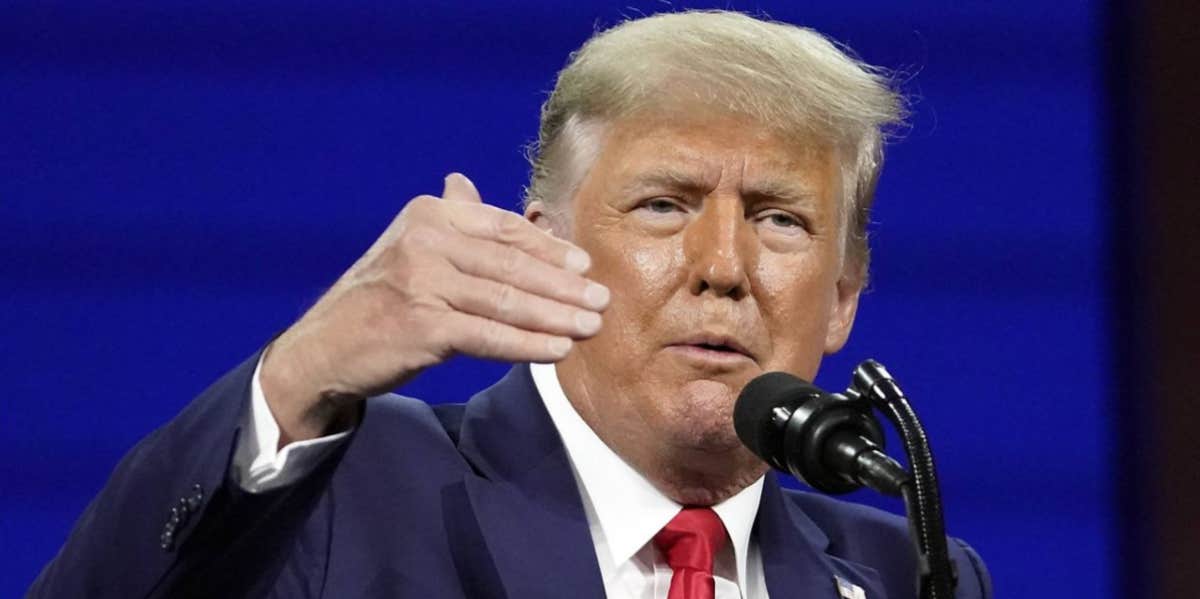Data Shows That Banning Donald Trump On Social Media Backfired On Those Wishing To Censor Him
Let's examine the facts.
 REUTERS/Octavio Jones
REUTERS/Octavio Jones Following the US Capitol riot that occurred on January 6, many social media platforms announced that they would be banning Donald Trump and that misinformation or incitements of violence stemming from him were prohibited.
High-traffic sites like Twitter and Facebook issued bans on all of Trump's accounts, deeming him a risk to public safety.
How was Donald Trump banned from social media?
Mark Zuckerberg made a statement in which he explained that Trump was “[using] his remaining time in office to undermine the peaceful and lawful transition of power to his elected successor, Joe Biden.”
He went on to state that Trump’s responses to the attempted insurrection could be used to incite more violence, and so he extended the ban that was originally placed from 24 hours to 2 years.
Twitter issued a statement on their blog citing a “permanent suspension due to the risk of further incitement of violence.” They went on to talk about their rules and guidelines.
“Our public interest framework exists to enable the public to hear from elected officials and world leaders directly,” they said. “However, we made it clear going back years that these accounts are not above our rules entirely and cannot use Twitter to incite violence, among other things.”
Following bans from two of the biggest social media platforms in the world, other companies like YouTube, Snapchat, Reddit, and Pinterest started the removal of Trump-related content.
With his censorship and removal from various social media websites, it seems as though Trump has been silenced from causing further problems in the country — only, he hasn’t.
Why Donald Trump's social media ban didn't work
The New York Times released a study showing that the censorship of Donald Trump hasn’t been working as well as everyone was hoping it would. If anything, it would appear that nothing has changed and his supporters have only been fueled further by the ban.
Popular right-wing app Parler was spawned as a result of Trump supporters’ frustrations with being ridiculed and ‘silenced’ by the left.
Other media follows in the same vein, from websites like Breitbart, news media like FOX and Newsmax, and Trump even has his own website where he makes statements about random political news from time to time.
These verticles continue to promote and spread the word of Trump to the reaches of the internet, and even though they aren’t reaching that far, they’re reaching just as wide.
Trump still has a lot of reach
Following Trump’s social media ban in January, his statements have continued to receive likes and shares when posted by other people. These posts have reached similar numbers to those he received prior to his removal from social media.
The New York Times notes that prior to the ban, "the social media post with the median engagement generated 272,000 likes and shares. After the ban, that dropped to 36,000 likes and shares. Yet 11 of his 89 statements after the ban attracted as many likes or shares as the median post before the ban, if not more.”
The way it’s working now, is that instead of Donald Trump himself tweeting or making posts on Facebook, he is now making statements in other places that then get coverage on the platforms mentioned above, which in turn get shared all over again on Twitter and Facebook anyway.
On March 21, he posted a statement on his blog saying how he “handed the Biden Administration the most secure border in history.” He went on to criticize the Biden administration’s handling of the border crisis. “Our Country is being destroyed!” Trump said. The statement was liked and shared more than 661,000 times.
While he hasn’t been completely silenced, his spreading of disinformation has been greatly severed
Trump screamed before his ban that the election was rigged and that the government committed election fraud, gaining 22.1 million likes and shares on the 10 most popular posts. After his ban, the 10 most popular statements he made about election fraud only received 1.3 million likes and shares.
“As the Trump case shows, deplatforming doesn’t ‘solve’ disinformation, but it does disrupt harmful networks and blunt the influence of harmful individuals,” said Emerson Brooking, a resident fellow at the Atlantic Council’s Digital Forensic Research Lab, which studies disinformation.
Trump’s personal blog has since been taken down, his senior aide said “It was just auxiliary to the broader efforts we have and are working on,” which is in reference to a new social media platform that is being created for Trump to use — probably similar to Parler.
Isaac Serna-Diez is a writer who focuses on entertainment and news, social justice and relationships.

